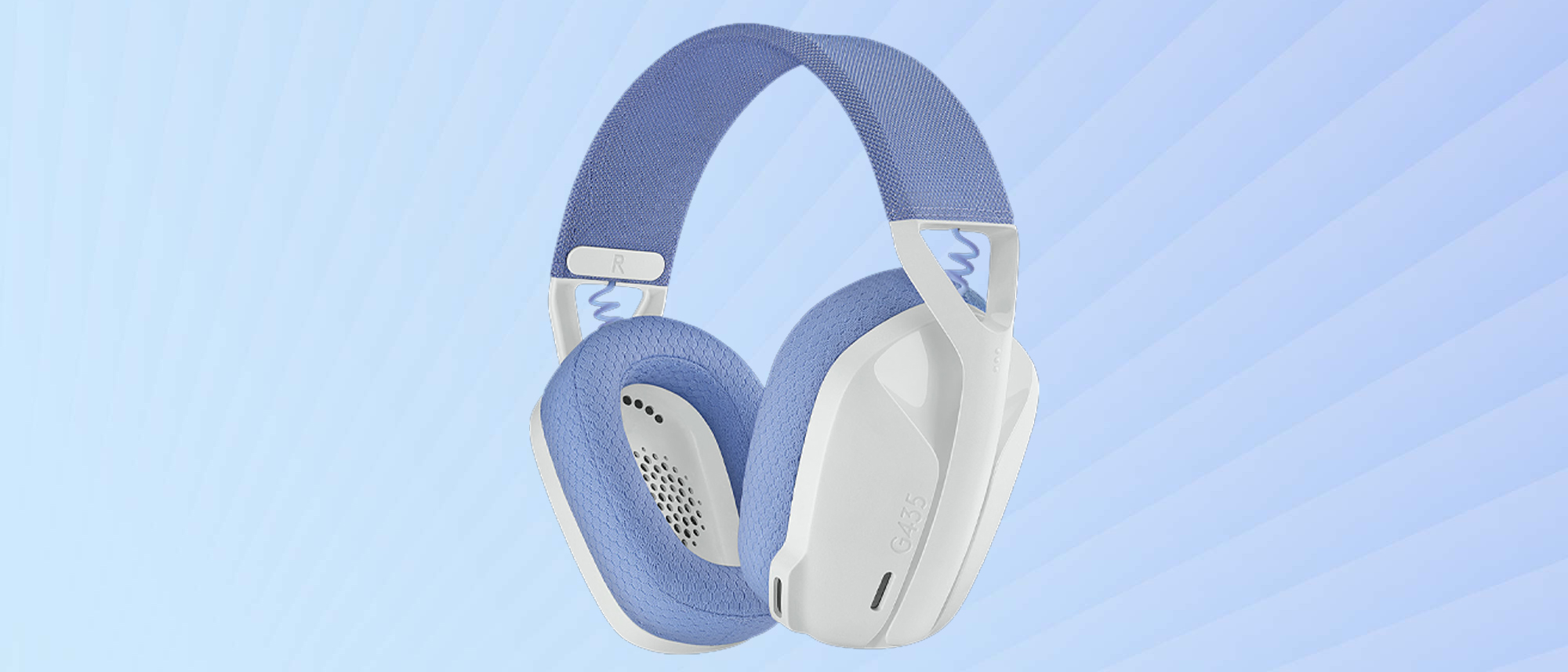Tom's Guide Verdict
The Logitech G435 has a flimsy build and middling sound quality, but the price is more than fair, and it's compatible with a wide variety of systems.
Pros
- +
Inexpensive
- +
Right size for kids
- +
Compatible with many systems
Cons
- -
So-so sound
- -
Flimsy build quality
- -
Bare-bones features
Why you can trust Tom's Guide
Compatibility: PC, PS4, PS5, Switch, mobile
Drivers: 40mm
Frequency Response: 20 Hz – 20 kHz
Wireless: Yes
The Logitech G435 doesn’t look like the gaming headsets we typically review. It’s small and lightweight; it’s available in a variety of garish colors; it doesn’t have a visible mic. That’s because whereas most gaming headsets target adult gamers on PC or consoles, Logitech designed the G435 with teens and tweens in mind. It’s an admirable goal, but the final product has decidedly mixed results.
I admire the Logitech G435’s easy compatibility with a variety of platforms and its easygoing asking price: $80. That puts it within reach for a lot of younger gamers, and it can get even more affordable with a Logitech promo code. But the most important aspects of a gaming headset are how it sounds and how it feels, and the G435 doesn’t nail either category. The G435 offers an unremarkable, non-customizable soundscape, and a cheap-feeling plastic chassis.
While the G435 may be a good entry point for its target audience, it’s easily one of the weaker gaming headsets Logitech has produced within the past few years. Unless you are on a tight budget, or find most gaming headsets too large for a comfortable fit, the G435 is a tough sell.
Read on for our full Logitech G435 review.
Logitech G435 review: Design
The first thing you’ll notice about the Logitech G435 is that it’s absolutely tiny. The whole apparatus measures 6.4 × 6.7 × 2.8 inches and weighs 5.8 ounces. Traditional gaming headsets are often 50% larger than this – and weigh about twice as much. That’s because Logitech designed the G435 with teen, tween and female gamers in mind.
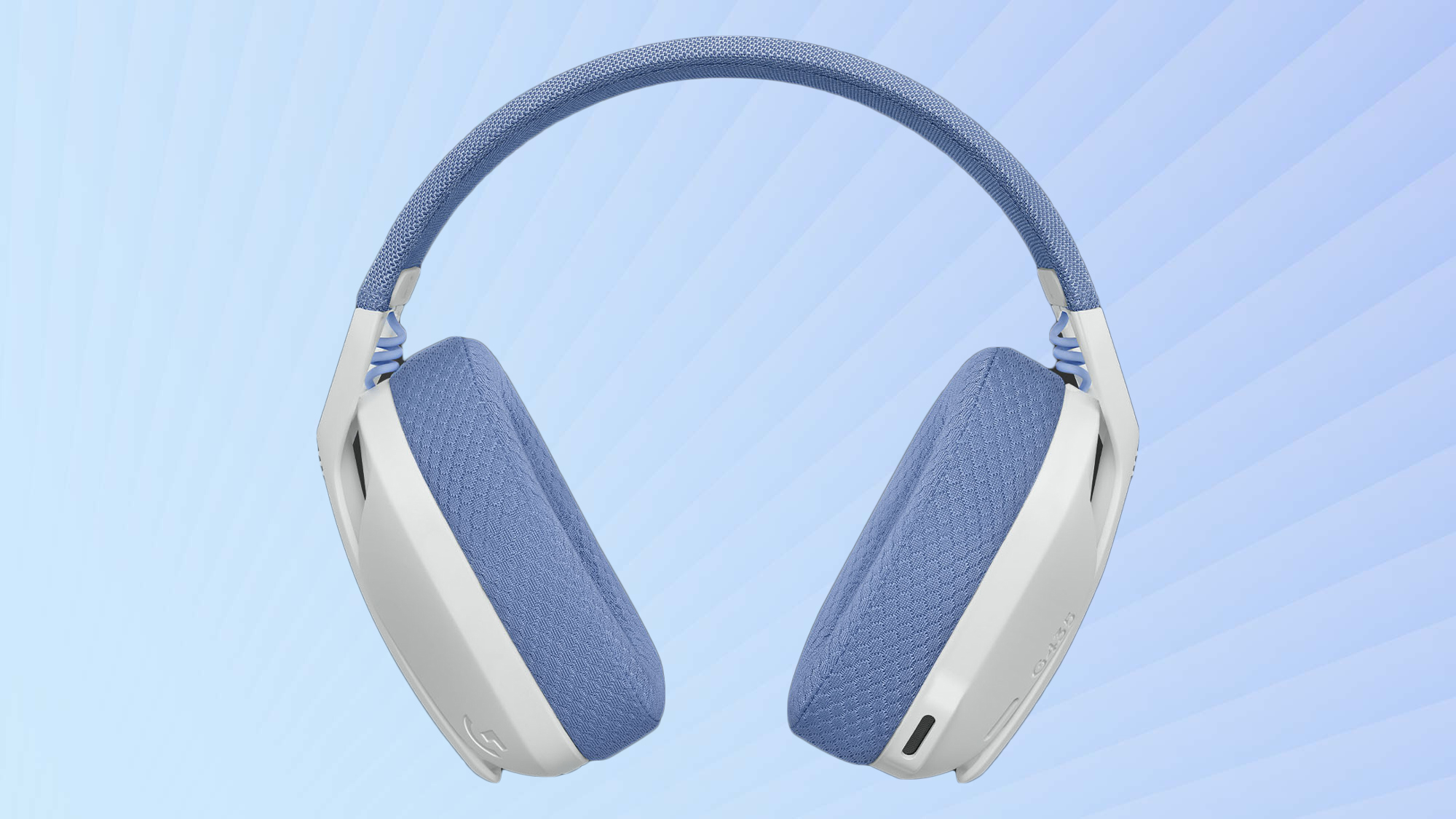
To be clear, a smaller headset to accommodate a different demographic is a great idea, and long overdue. But while I admire the G435’s size and weight, it leaves a lot to be desired otherwise. The whole device feels flimsy, with a thin plastic chassis and an elastic headband that doesn’t leave much space for adjustment.
For comparison: At a press event, I once saw a Logitech representative chuck an Astro headset against a steel wall and pick the device up off the floor, unscathed. I’m not convinced that the G435 would survive a drop onto a hardwood floor.
On the bright side, you can get the G435 in three different color combinations: a subdued black and yellow, an elegant white and purple or a gaudy blue and pink. They’re not all equally pretty, but it’s high time the gaming industry moved past the “all black, all the time” peripheral mentality.
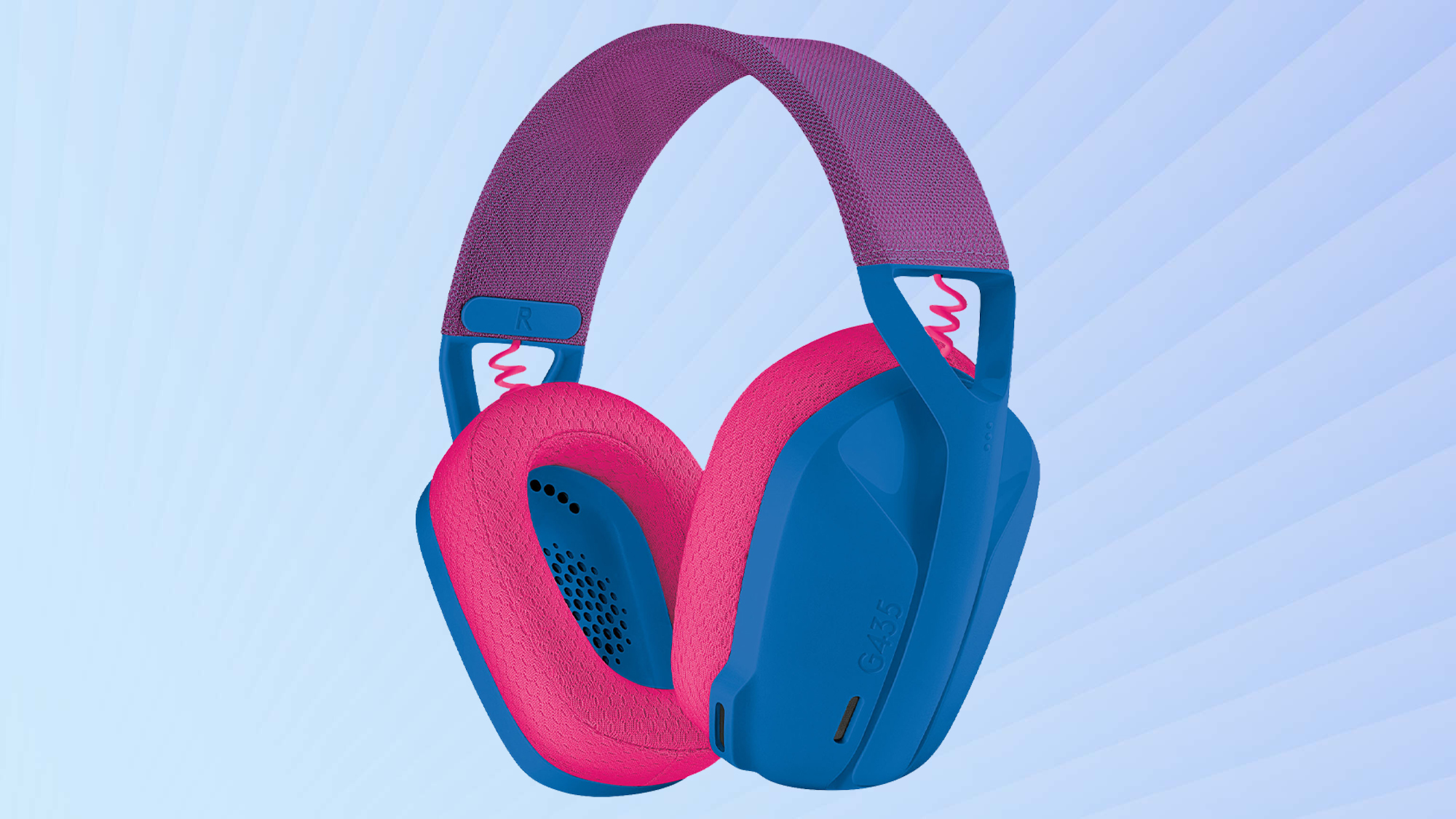
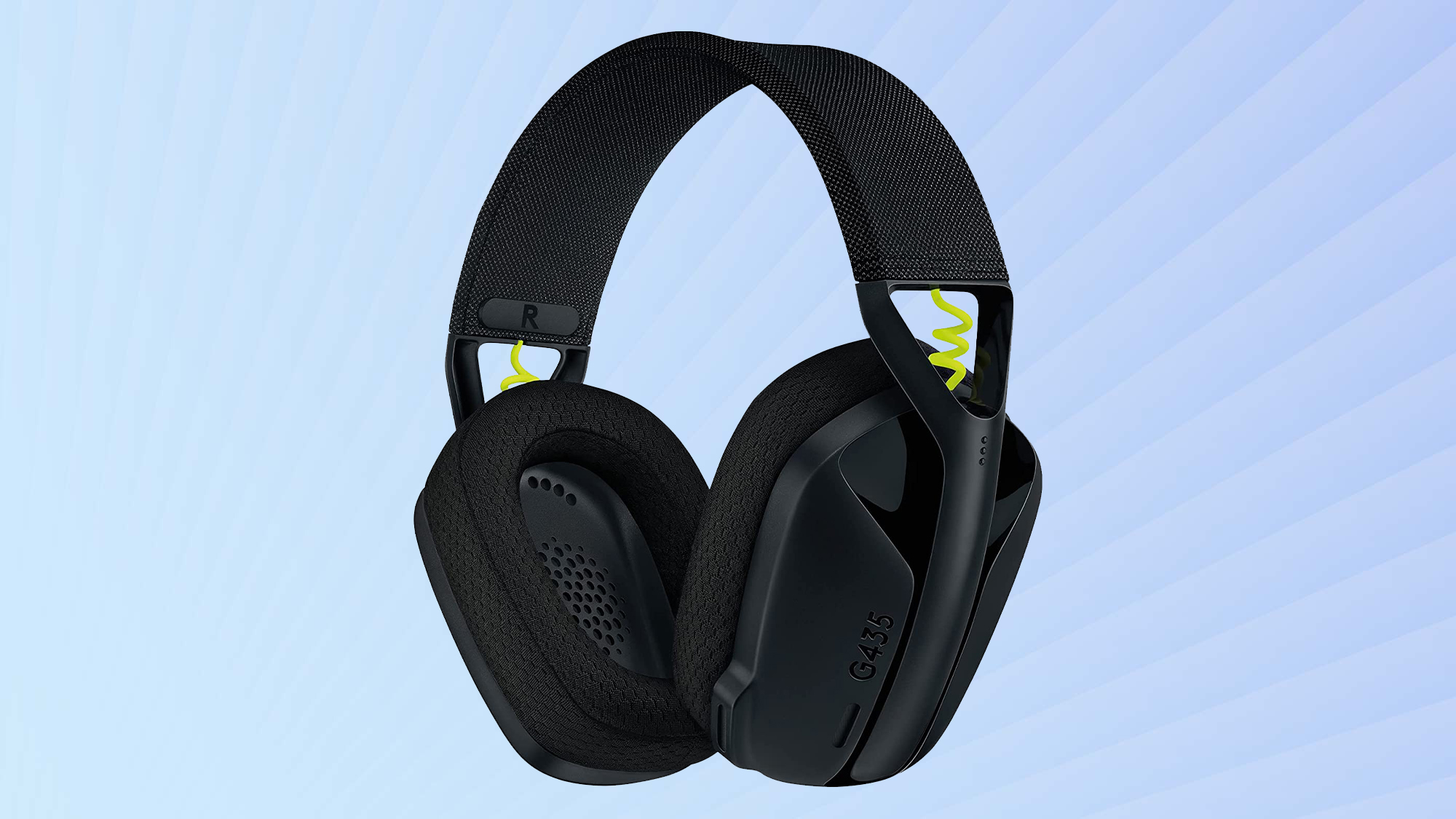
There’s nothing on the right earcup, so all the controls feel crammed together on the left one. That’s where you’ll find a power button, two volume buttons, and a mic mute button. Since the G435 doesn’t have any software, these buttons all pull double or triple duty to manage the headset’s various features, and it can be a real pain to activate them – especially if you want to keep the G435 on your head. The volume buttons in particular feel cumbersome; a dial would have been much easier to manipulate.
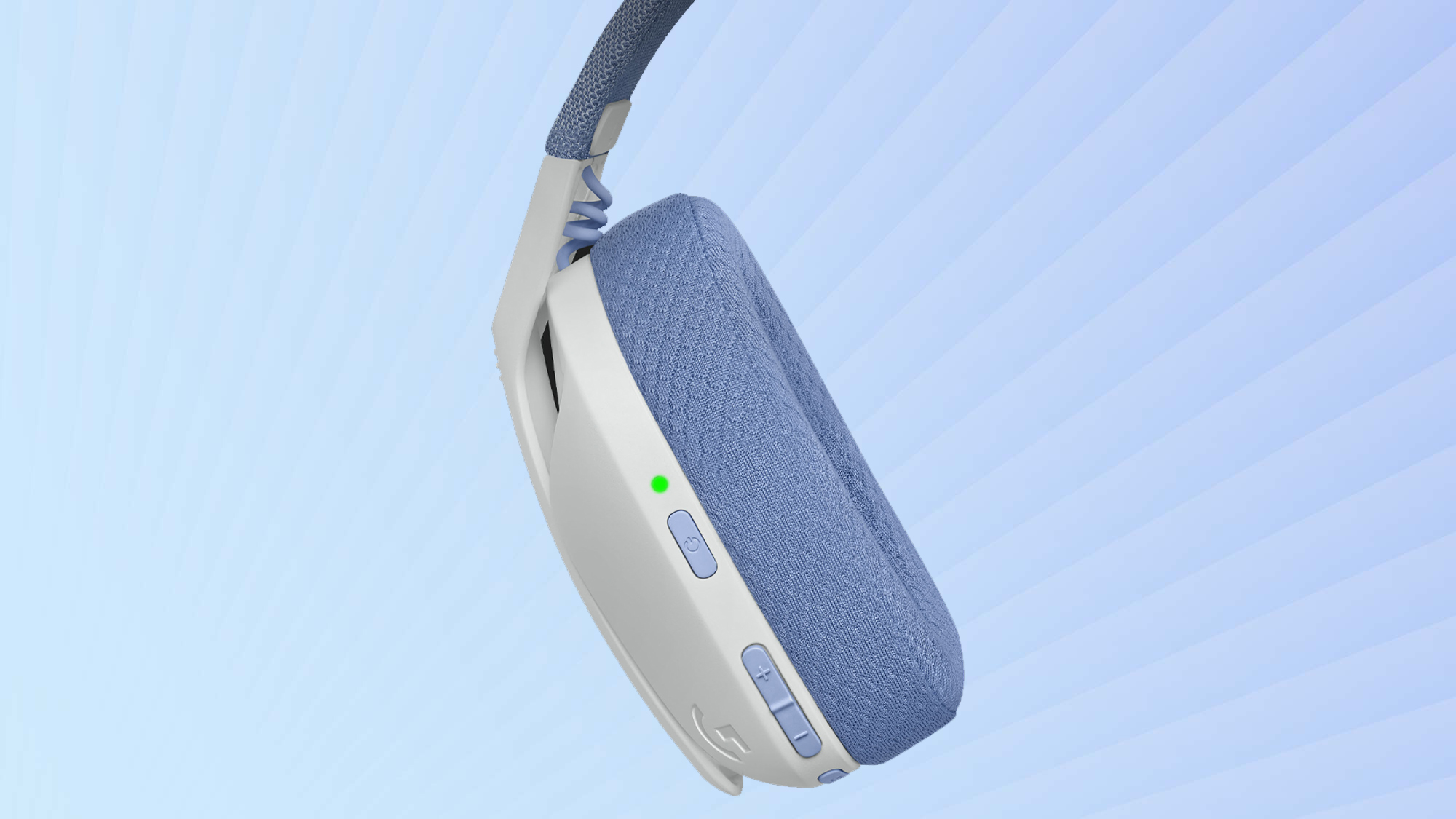
Unlike most gaming headsets, the G435 doesn’t have a boom mic, relying instead on a built-in hidden mic on the right earcup. It’s aesthetically pleasing, but there’s obviously a tradeoff in recording quality.
Logitech G435 review: Comfort
As an adult male with a somewhat outsized head, the Logitech G435 was not a good fit for me. You can slide the earcups up and down the headband, but there are no discrete notches, and they don’t stay put that well. The elastic headband helped matters, but in the end, I didn’t get a good seal around my ears. The headset didn’t feel tight, but it also didn’t feel especially stable.
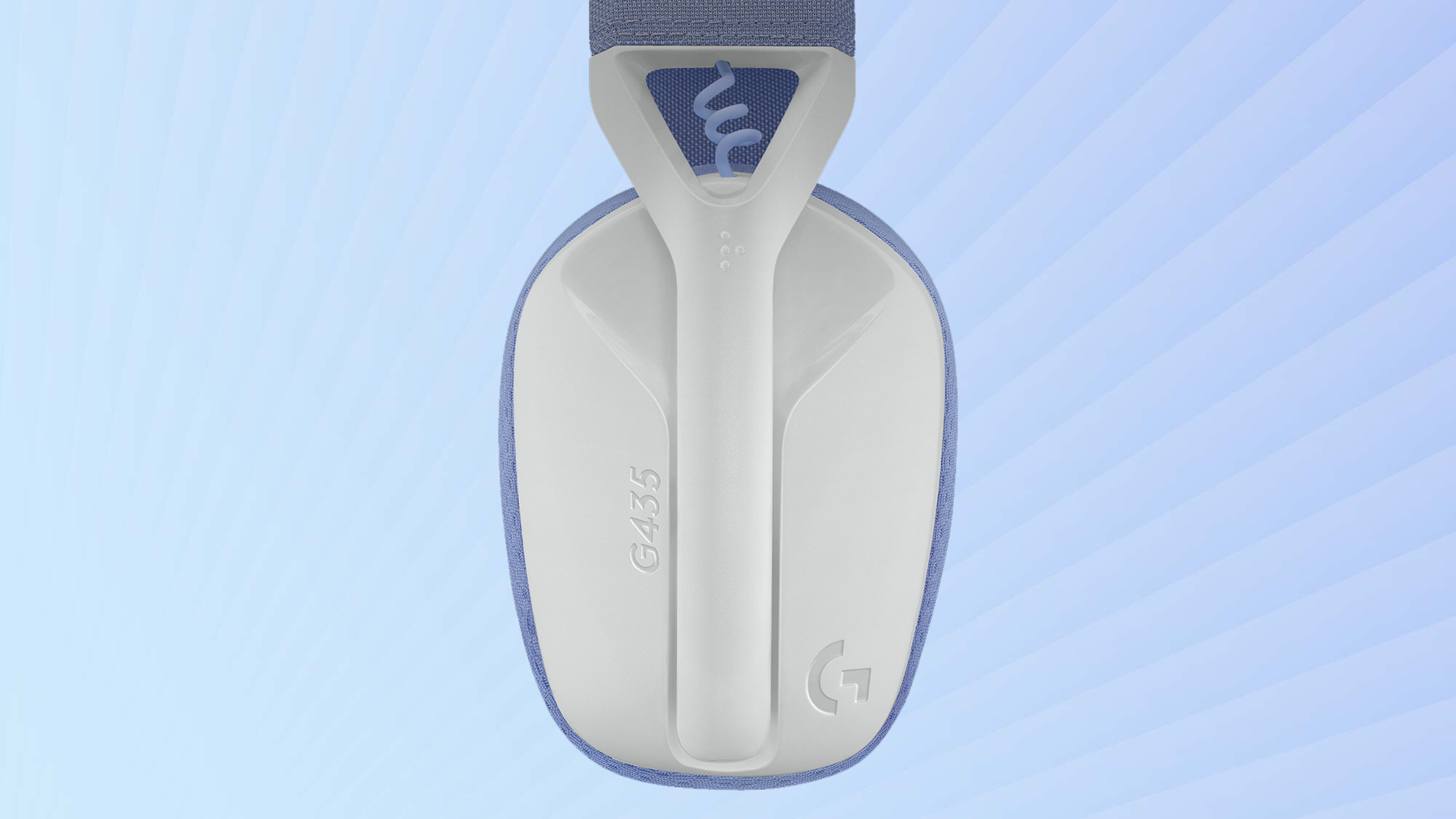
Granted, fit is relative. I handed the G435 off to my domestic partner, who is a woman, and who doesn’t share my comically large head (or hair). She said it fit considerably better than most gaming headsets she’s tried, and has actually commandeered the thing for her own video meetings.
Logitech G435 review: Performance
To damn the Logitech G435 with faint praise, it sounds OK. Granted, an $80 wireless headset isn’t going to have top-of-the-line audio, but it’s still a big step down from something like the Logitech G Pro X Wireless, or even the more modest Astro A20. (Astro is a division of Logitech.)
I tested the G435 on PC with Age of Empires III: Definitive Edition, Deathloop, Baldur’s Gate III and Final Fantasy XIV. The sound was competent, but unremarkable, across the board. Gunshots and artillery fire in Age of Empires was clear, but lacked oomph. The rapid-fire dialogue in Deathloop was perfectly audible, but didn’t capture the nuances of each vocal performance. It doesn’t help that by nature, the G435 is an extremely quiet headset, and finding the right balance between “inaudible” and “uncomfortably loud” was a challenge.
The headset is also compatible with PlayStation consoles via USB dongle, as well as the Nintendo Switch and mobile platforms via Bluetooth. I played through a few games on these platforms as well, and observed similar sound quality. Dialogue and sound effects were a bit muted in games like Tales of Crestoria on Android, although the connection process itself was simple, at least.
I had similar observations about music, where I listened to tracks from Old Crow Medicine Show, Flogging Molly, The Rolling Stones and G.F. Handel. The G435 doesn’t provide much bass, and the flat soundscape tends to muddle vocals and instruments. You could conceivably wear the G435 out of the house, at least, thanks to its Bluetooth compatibility and small size – but I don’t know if you’d be able to hear much over the din of a subway or an airplane.
Logitech G435 review: Features
Perhaps the best feature of the Logitech G435 is its widespread compatibility. By using both a USB dongle and Bluetooth connectivity, you can connect the headset to a computer, a PlayStation console, a Nintendo Switch or a mobile device. (You can’t connect it to any kind of Xbox, or to older gaming devices, since there’s no 3.5 mm audio jack.) If you plan to switch back and forth between multiple Bluetooth devices, having to pair and re-pair the headset can be a pain, but that’s more a criticism of Bluetooth than of the G435 specifically.
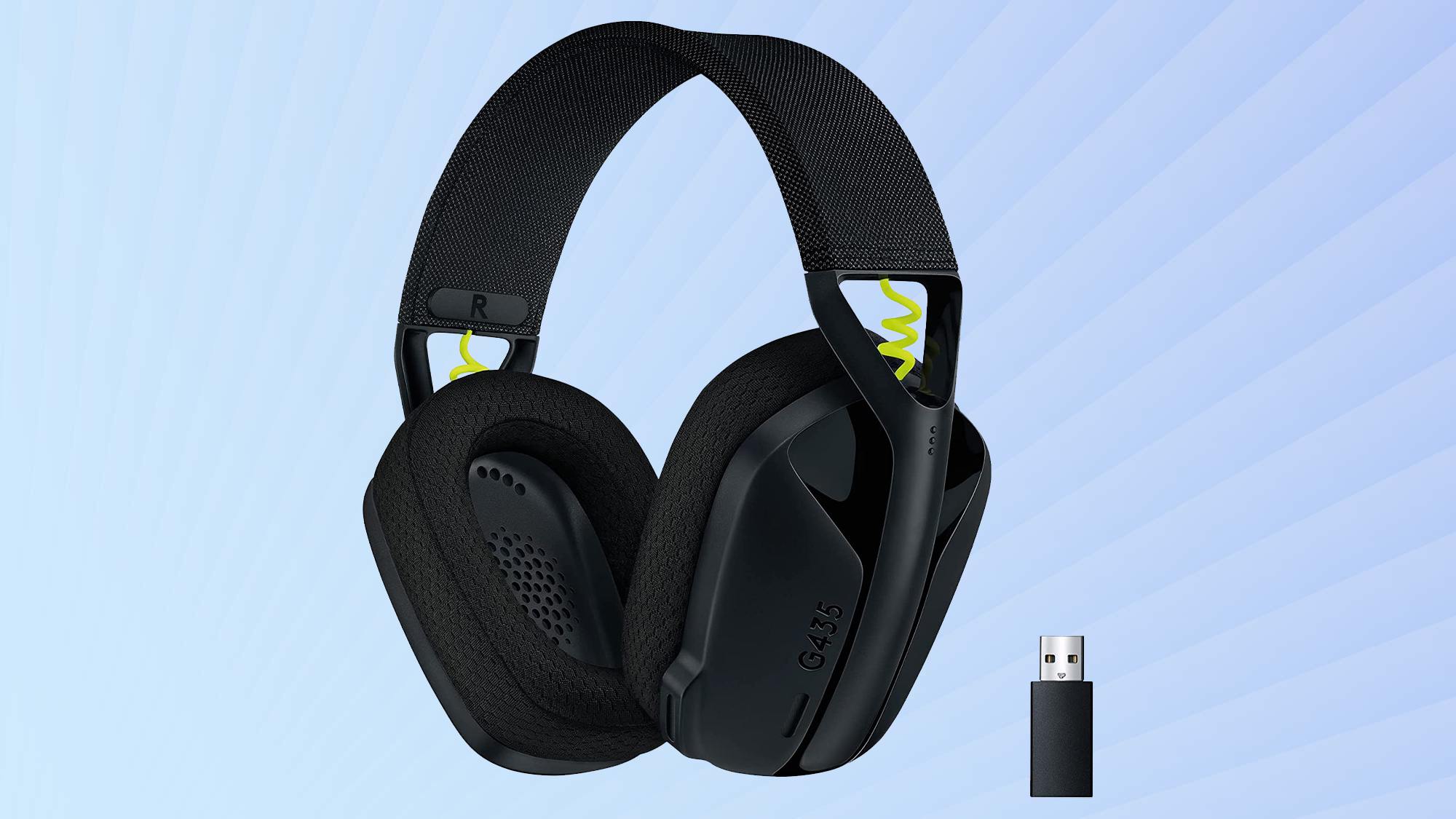
What’s surprising about the G435, however, is just how few features it offers compared to other Logitech headsets. It’s not compatible with the Logitech G Hub software on PC, so you can’t toggle surround sound, adjust equalization options, control mic volume or set up profiles for individual games. This means that if you don’t like the G435’s default sound, there’s nothing you can do to alter it.
By employing some tedious button combinations, you can adjust mic sidetone and limit the volume to 85 dB, which is probably a good idea if you purchase the G435 for a child. But for the most part, what you see with the G435 is what you get. Except, of course, for the mic – that’s almost invisible. It gets the job done, but having so much distance between your mouth and the mic means it’s only OK at picking up voices, and quite good at picking up background noise.
Logitech G435 review: Verdict
Admittedly, I’m not the target audience for the G435. I don’t have a small head; I don’t game primarily on mobile; I don’t have any trouble finding gaming headsets that fit my lifestyle and habits. But even taking that into account, the G435 has some significant drawbacks. It simply doesn’t sound as good or feel as substantial as other headsets from the same manufacturer.
At the same time, the G435 does have some undeniable benefits. Bluetooth connectivity is a big perk, and is essentially unheard-of in an $80 gaming headset. As an entry-level peripheral for a younger audience, the G435 does what it sets out to do. But if you buy this headset for a child or teen, they’ll probably grow out of it – both in terms of size and feature set.
Marshall Honorof is a senior editor for Tom's Guide, overseeing the site's coverage of gaming hardware and software. He comes from a science writing background, having studied paleomammalogy, biological anthropology, and the history of science and technology. After hours, you can find him practicing taekwondo or doing deep dives on classic sci-fi.
